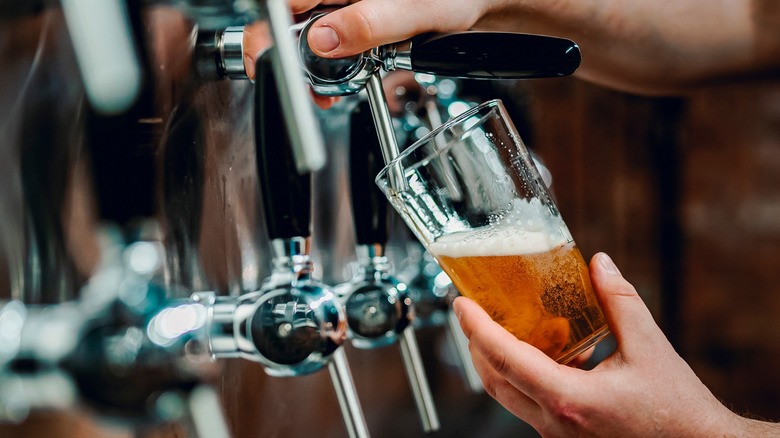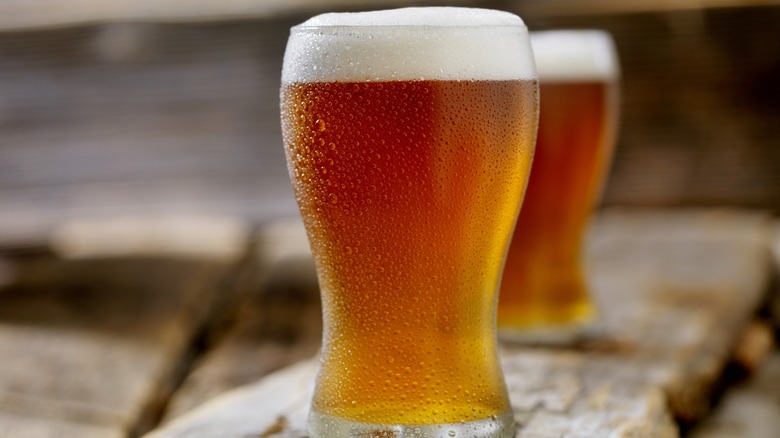Beer's 3 'Biggest Enemies' According To An Expert Brewer
If you love lagers, IPAs, stouts, or ales, there are a few things you should know before taking another sip of beer. For example, it's not always the best idea to drink a beer after its expiration date. Hopefully, you're familiar enough with the smell of good beer to know when it's skunked, but there are additional precautions you can take at a bar or restaurant to make sure you're not getting an inferior drink. Jeff Tyler, co-owner and head brewer of Spice Trade Brewery + Kitchen, told Mashed, "In general, draft beer is seen as the best option when it comes to fresh beer when you're out at a bar or restaurant."
Unfortunately, if you're not an award-winning brewer like Tyler, you may not know what causes beer to go bad in the first place. According to Tyler, fresh beer's three biggest enemies are "oxygen, temperature, and exposure to light. The more exposure to any of these three variables, the quicker your beers' flavors will degrade." If you didn't brew the beer, it may be difficult to ascertain the effects of these three factors, but there are clues you can look out for.
The reason you usually see beer sold in brown or green bottles is that exposure to light can skunk the beer, or cause a chemical reaction that creates a foul odor. So, your first (and easiest) step to guaranteeing a delicious, fresh pint is to avoid beer in a clear glass bottle.
A buttery taste is a bad sign
The next variable, temperature, is a bit more difficult to identify because the guidelines change depending on the beer. Serving it too cold can make your drink bitter or even tasteless, whereas beer that's too warm can sometimes taste flat and boring. If you're trying to determine the best temperature for your favorite beer, the key is in the style and brew. Stronger beers, like stouts and lagers, can be served warmer (generally 45 to 55 degrees Fahrenheit), while lagers and ales should be served cooler (somewhere between 33 and 45 degrees).
The last variable, oxygen, is simpler to understand: Too much oxygen can result in excessive yeast production. "Kegs have a lower oxygen pickup during the packaging process than cans or bottles do, so they tend to be the best option, assuming they are stored cold once filled with beer," Tyler said. If the beer lines aren't cleaned at least biweekly, however, bacteria can build up and spoil the beer. According to Tyler, "If you're out at a random dive bar and their tables aren't clean, chances are their draft lines aren't, either." If you order a draft beer and notice a buttered popcorn flavor, "This is called diacetyl and is a dead giveaway that the lines are dirty," Tyler said. Luckily, this chemical, a byproduct of fermentation that's also used to flavor microwave popcorn, is generally recognized as safe by the FDA, though it can affect your beer's flavor.

